Rock plantings – Saikei
Use trees, soil and rocks to form a miniature living landscape. These are a very significant part of the art and culture of Japan and more especially China. They are not a figment of someone’s vivid imagination but a recreation of the land all around. They are found everywhere - in gardens, parks, exhibitions even in people’s houses. It is almost a reverence to nature, so powerful as it is all around you. We saw it for ourselves and can understand it as they see and almost worship the land around them.
Saikei or "planted landscape".
It is a development of the Japanese arts of bonsai, bonseki (tray lanscape using white sand and rocks) and bonkai, (three dimensional papier-mâche created landscape) and is related to the miniature-landscape arts of Chinese penjing. It is the art of creating tray landscapes that combine miniature living trees with soil, rocks, water, and related vegetation in a single tray or similar container. A saikei landscape will remind the viewer of a natural location through its, choice of ground materials, and the species used in its plantings.
It is a development of the Japanese arts of bonsai, bonseki (tray lanscape using white sand and rocks) and bonkai, (three dimensional papier-mâche created landscape) and is related to the miniature-landscape arts of Chinese penjing. It is the art of creating tray landscapes that combine miniature living trees with soil, rocks, water, and related vegetation in a single tray or similar container. A saikei landscape will remind the viewer of a natural location through its, choice of ground materials, and the species used in its plantings.
A typical saikei is contained in a large shallow ceramic tray. Within the tray, rocks and soil are arranged to suggest a natural landscape, often modeled on a specific type of real landscape, with a mountain path. Small trees are planted in the soil and may be arranged to show perspective, with smaller trees to the rear. The trees themselves are less elaborately shaped than bonsai. They are cultivated to look like mature trees that match the simulated landscape they grow in. Non-tree plants may also be grown in the saikei, as ground cover with other small plants that help create the landscape.
Bonsai uses stones as the base for a tree or trees in the root-over-rock style and for growing-in-a-rock styles, but does not produce landscapes from mixed stones and soil. Saikei concentrate on the production of a natural living landscape, rather than on individual trees as done in bonsai.
Miniature figures of people, animals, buildings, and other outdoor elements may be placed on a bonkei but less often on saikei.
Saikei was designed to be an easier practice to participate in than bonsai. A saikei container provides an amount of soil making watering and root pruning easier. Saikei plantings can be assembled quickly, with beginners able to create an effective result in a few hours. The trees can be very young and therefore inexpensive, and none of the other materials except the tray itself cost much. The trees themselves do not require a great deal of shaping or other manipulation, compared to bonsai's complex and time-consuming development practices. As a result, saikei is ideal for beginners and for those who have little to spend on the hobby.
A saikei display can contain numerous living plants and requires growing conditions that allow them to thrive. The saikei should be created to use plants that all share similar cultivation requirements, particularly soil type and watering. The climatic requirements should also be similar; it is difficult to cultivate plants from different hardiness zones in a single saikei display.
As a saikei ages, some of its trees may grow too large and can be replaced as they are not specimen trees. This is expected and in fact is one of the aims of saikei. The owner has two choices - to reduce the size of the large trees, or to remove them from the saikei and grow them separately. Reducing their size involves bonsai-related techniques such as pruning. Removing oversize trees from the saikei leads naturally to potting them individually and cultivating them as bonsai.
The rocks or stones used in saikei do not need to be specimen suiseki, they are just rocks of similar character to the scene you are creating; they should however, if the scene is to be realistic, be geologically similar. Sedimentary rocks (those laid down under the sea) should not appear in the same landscape as igneous or volcanic rocks. It is quite acceptable and frequently done in China, to create rocks by cementing (gluing) similar pieces of rock, (often slate) together to give the appearance of a very craggy rock.
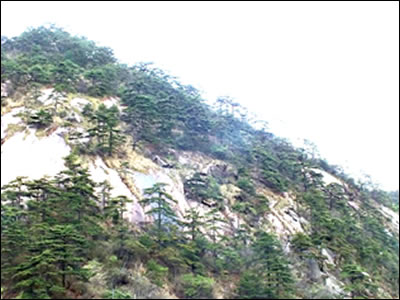
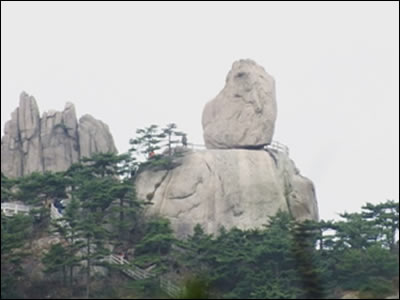
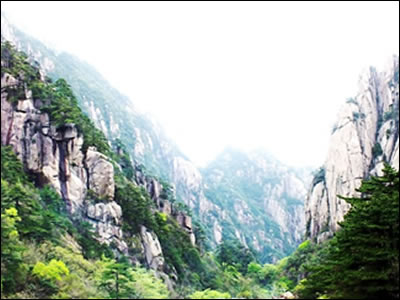
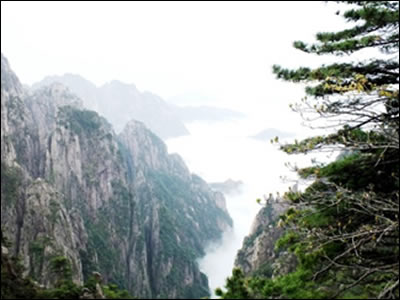
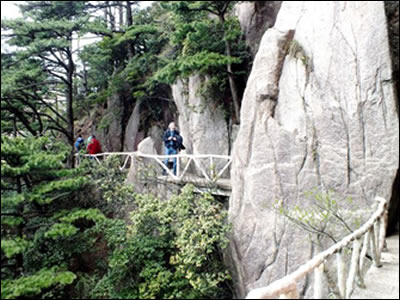
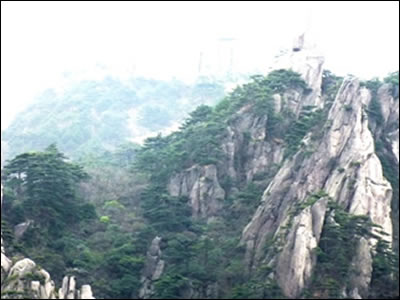

Bonsai Rock Planted Landscapes
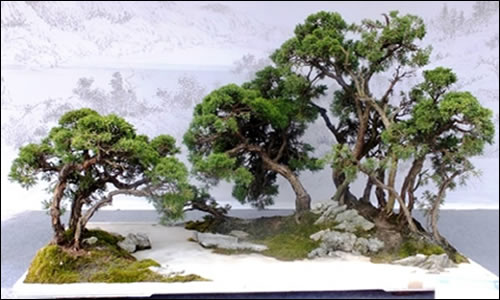
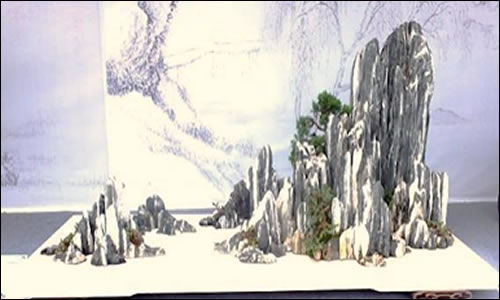
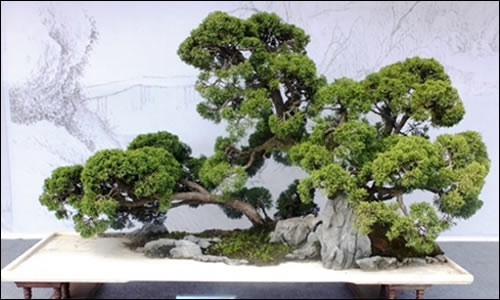
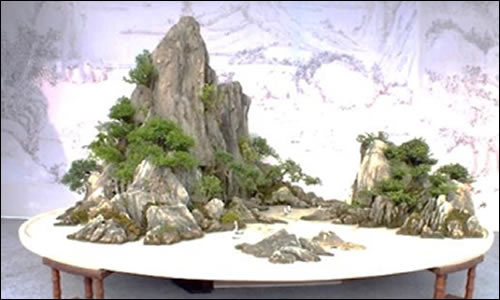
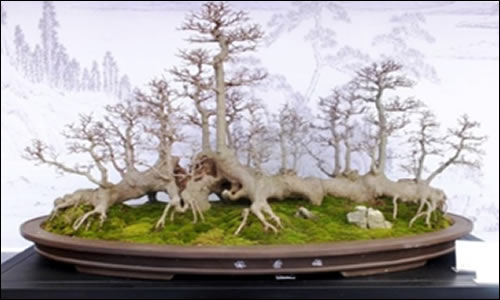
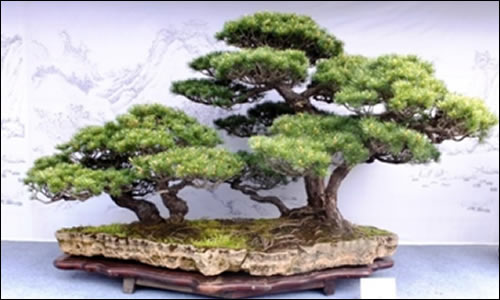
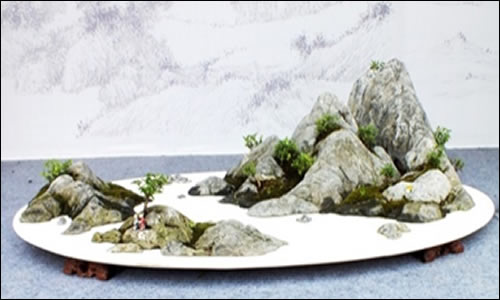
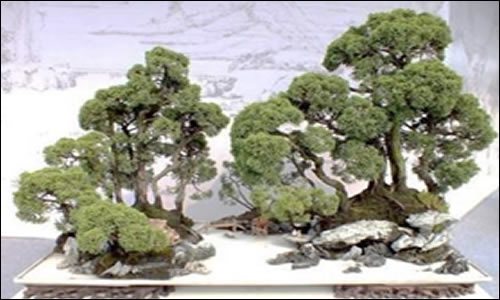
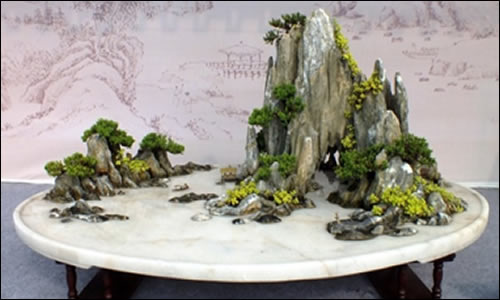
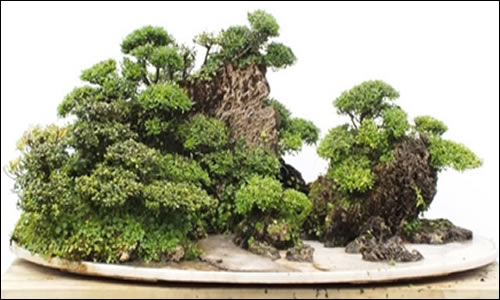


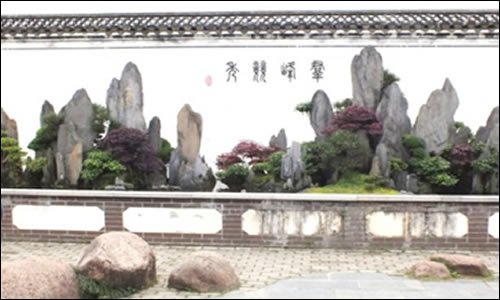
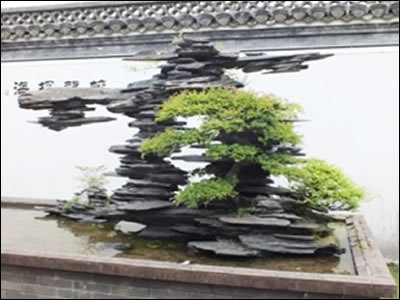
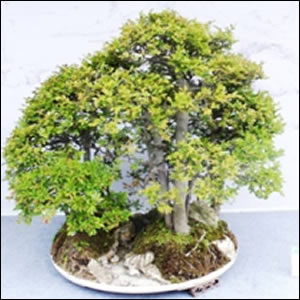
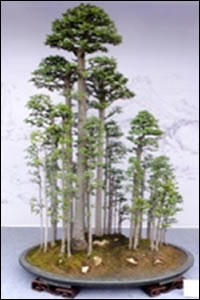
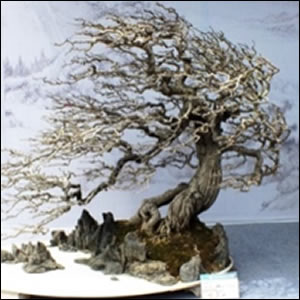
Web design: nysys
